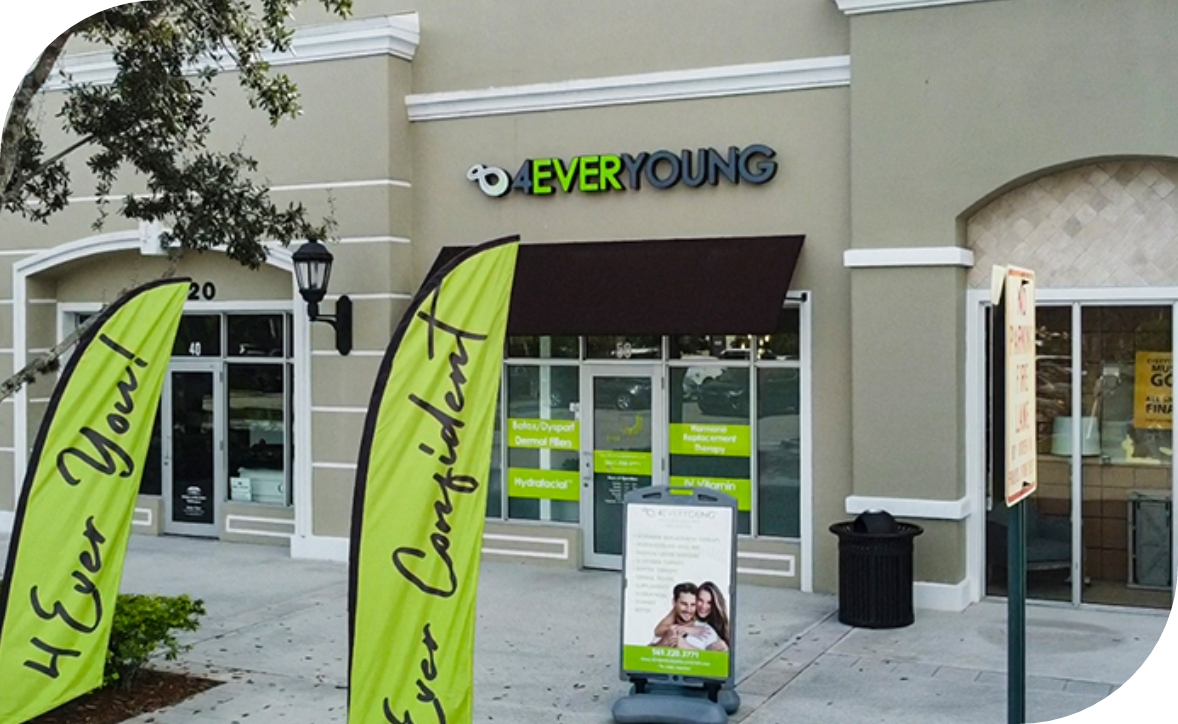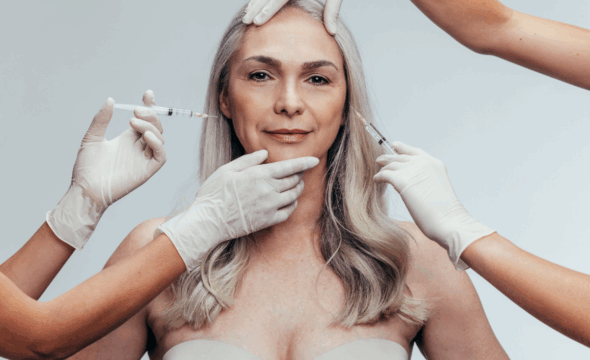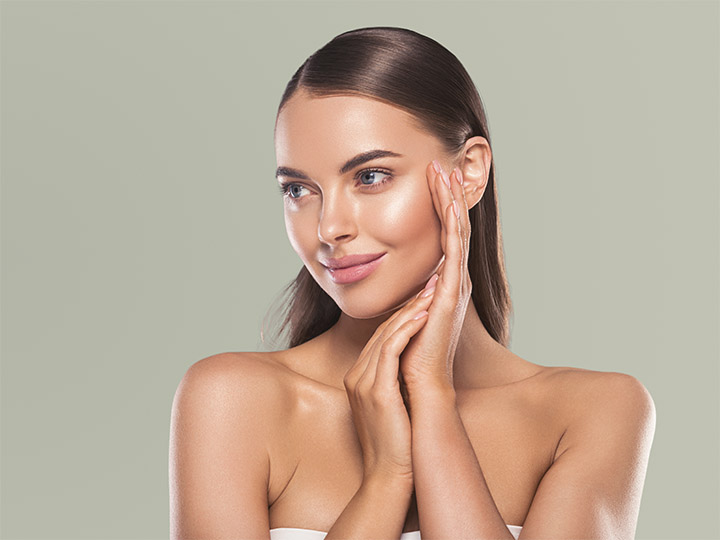What Is Botox? A Comprehensive Guide
Botox is a purified form of botulinum toxin A used to relax targeted facial muscles and reduce the appearance of lines caused by expressions like smiling or frowning. Despite being derived from a toxin, Botox has been safely used in medicine and aesthetics for decades. What makes it so appealing is its ability to create smoother, younger-looking skin without the need for surgery or downtime. Many people seek facial botox treatment to look refreshed and more confident without altering their natural appearance. The process is relatively quick, minimally invasive, and delivers noticeable results within a short timeframe. It’s especially popular among people who want to reduce early signs of aging.
How Botox Works on a Cellular Level
Neuromuscular Blocking Mechanism
When injected, botulinum toxin A prevents the release of a chemical messenger called acetylcholine. This neurotransmitter is responsible for triggering muscle contractions. Without it, the targeted muscle can’t contract, which causes the area to remain relaxed and still. This is how Botox softens the repeated movements that cause wrinkles to form over time. The precision of this action allows practitioners to focus only on specific muscles while preserving natural facial expressions. This cellular interruption is both temporary and safe when administered properly. Understanding how Botox works helps patients feel more confident about its controlled effect.
Muscle Relaxation and the Softening of Dynamic Wrinkles
Dynamic wrinkles form from repeated facial motions like smiling or raising your eyebrows. These lines tend to deepen as the skin loses elasticity with age. Botox doesn’t fill or plump the skin; instead, it relaxes the muscles underneath, which softens the appearance of these motion-related lines. When the treated muscle stays at rest, the skin above it looks smoother and less creased. This effect is beneficial in the forehead and around the eyes, where frequent movement causes early signs of aging. Patients who receive Botox treatment for the face often notice a more refreshed and well-rested appearance.
Timeline for Onset and Fading of Results
Typically, results begin to show within three to five days as the targeted muscles start to relax. The full impact usually develops by the second week, when the treated area reaches its maximum smoothness. This peak period can last about three to four months, depending on how the body metabolizes the product. After that, the muscle gradually regains movement, and lines may slowly reappear. Regular maintenance sessions help prolong results and prevent deeper wrinkles from forming. Patients interested in getting Botox should keep this timeline in mind when planning treatments around events or milestones. Setting realistic expectations about timing helps ensure satisfaction with each session.
Botox for Fine Lines vs. Other Dynamic Motion Wrinkles
Fine lines are shallow and often appear in areas of frequent movement. Botox can effectively reduce these early signs of aging by relaxing the muscles underneath, allowing the skin to recover and appear smoother. However, deeper dynamic wrinkles may require a slightly different approach in dosage or technique. While both issues are caused by motion, the treatment may vary depending on the depth and location of the wrinkle.
Botox Treatment Procedure Step-by-Step
Pre-Treatment Prep
Before your Botox session, a consultation helps ensure the treatment is suitable for your goals. During this appointment, the provider will evaluate your skin and ask about your medical history. You’ll also discuss which areas you want to treat, what kind of results you expect, and how much product you might need. This is the time to ask questions, share concerns, and understand the procedure from start to finish. Patients seeking Botox facial injections should arrive with clean skin and avoid blood-thinning medications or supplements unless otherwise instructed. Clear communication between you and your injector leads to the most satisfying outcome.
Injection Process
The process is usually quick and well-tolerated by most people. A trained professional follows a step-by-step approach to ensure safety and effectiveness, adapting techniques to suit individual facial anatomy:
- Skin Cleansing: This step is vital in reducing the risk of introducing bacteria into the skin through the tiny needle punctures. A medical-grade antiseptic is applied with sterile gauze to remove surface oils, sweat, and environmental debris. Even if the skin appears clean, invisible contaminants can cause irritation or infection after injection if not properly removed. This initial cleansing also allows the injector to clearly assess facial features without the interference of makeup or sunscreen. The provider may also examine the skin at this stage to determine if any areas of sensitivity or recent cosmetic procedures should be considered. Ensuring a sterile canvas sets the tone for a safe session.
- Numbing Cream: While Botox injections are typically well-tolerated and described as a mild pinch or pressure, some clients may prefer a topical numbing cream. Applied to the skin 10–15 minutes before the injections, this cream dulls surface sensation and minimizes discomfort in areas with thinner skin or more nerve endings. The numbing process also helps reduce involuntary facial movement during the session, which aids in precision targeting. Although not medically necessary for everyone, offering numbing cream creates a more personalized treatment experience. In some cases, an ice pack may be used as an alternative to reduce discomfort and swelling simultaneously.
- Precision Injections: Botox is administered using ultra-fine, short needles to ensure accuracy while minimizing trauma to the skin. The injector uses small, measured doses at each site, typically spaced just millimeters apart. The fine needle allows for shallow, controlled entry into the skin, which is crucial for achieving natural-looking results without spreading the product beyond the target area. Depending on the facial region and the desired effect, the provider may use different angles or depths for the injection. This step is usually completed quickly, with little to no bleeding or bruising, thanks to the small size of the needle and careful technique. Precision is everything here: even a slight deviation in placement can compromise symmetry or yield suboptimal results. B
- Targeted Muscle Mapping: Botox works by temporarily relaxing the muscles that cause expression lines, so selecting the correct muscles is a critical part of the process. The provider will observe your facial expressions to identify which muscle groups are most active. These expression-based patterns vary significantly from person to person, making customization essential. For example, someone with deep forehead lines might require slightly different injection sites than someone whose crow’s feet are more pronounced. The injector may also assess asymmetry and adjust placement accordingly to create a more balanced and natural appearance. This mapping step ensures that Botox is used efficiently, allowing the final look to preserve natural expressiveness while softening the appearance of lines and wrinkles. Targeted injections based on muscle movement help avoid the “frozen” look that some people fear, making this one of the most essential phases of the appointment.
Understanding how each element contributes to the overall procedure can give you greater confidence with your results, helping you feel at ease before your next appointment.
Post-Treatment Guidelines
After the injections are completed, patients should avoid touching or massaging the treated areas for at least 24 hours. This helps prevent the product from spreading to unintended muscles. It’s also important to stay upright for several hours after the procedure and avoid lying down immediately. Physical exertion and high heat environments should be postponed for a day or two. These precautions reduce the chance of swelling or migration of the product. While most people return to regular activities the same day, following these steps helps ensure smooth healing and optimal results. Patients using microbotox treatments are able to resume light tasks within hours.
How to Minimize Side Effects
Mild side effects like swelling, redness, or small bruises at injection sites are common and temporary. These typically resolve on their own within a few days. Applying a cold compress gently after the session can also calm the skin and reduce discomfort. It’s best to follow your provider’s aftercare instructions closely, especially for the first 48 hours. Selecting a trained professional at the best botox clinic significantly lowers the risk of complications.
Common Botox Applications for the Face and Beyond
Masseter Botox
The masseter muscle, located at the angle of the jaw, can become enlarged from habits like teeth grinding or jaw clenching. This often leads to a square-shaped face or discomfort in the jaw area. Injections into this muscle gradually reduce its size, creating a more tapered, V-shaped facial contour. The process also provides relief for those who suffer from jaw tension or temporomandibular joint discomfort. Many patients turn to masseter botox as an alternative to oral devices or pain medication. Regular treatments can help maintain the results, giving the face a more balanced and refined silhouette while improving quality of life.
Under-Eye Botox
Some areas of the face require a lighter approach, especially delicate regions like under the eyes. In these cases, providers often use micro-doses, sometimes called “Baby Botox,” to gently smooth fine lines and refine skin texture without freezing expressions. Botox for under-eye wrinkles is popular among patients who want a fresher appearance without surgery. These shallow injections help relax tiny muscle movements that cause creases.
Medical Uses
Its therapeutic potential in the medical field is just as transformative. Over the years, Botox has earned FDA approval and clinical credibility for treating a range of non-cosmetic conditions. Below are the key medical conditions:
- Chronic Migraines: For individuals suffering from chronic migraines, Botox has emerged as a preventative option that can reduce both the frequency and severity of attacks. Administered through a series of small injections in specific areas around the head, temples, neck, and shoulders, it works by interrupting pain signals before they reach the brain. These injections are typically given every 12 weeks and involve up to 31 strategic sites. The procedure is quick and minimally invasive, often completed in under 30 minutes with little downtime.
- Hyperhidrosis: Excessive sweating, commonly referred to as hyperhidrosis, can be a distressing condition that affects both physical comfort and social confidence. Botox has become a leading non-surgical treatment for managing this condition, particularly in areas like the underarms, hands, feet, and even the scalp. The treatment works by blocking the chemical signals that activate sweat glands, effectively reducing perspiration in targeted zones. During the procedure, the provider administers a series of small injections just beneath the skin’s surface. Unlike topical antiperspirants or oral medications, Botox delivers localized results without systemic side effects. This approach is beneficial for individuals who have not found relief from traditional methods or who experience skin issues related to sweating.
- TMJ Dysfunction: Temporomandibular joint disorder (TMJ) involves inflammation or dysfunction in the jaw joint and surrounding muscles, often leading to symptoms like jaw clenching and teeth grinding (bruxism). Botox can help relieve TMJ-related discomfort by targeting the overactive jaw muscles with carefully placed injections. Effects typically last three to four months. In some cases, Botox for TMJ may also refine the jawline by reducing muscle bulk.
By offering long-lasting results with minimal recovery time, it empowers patients to take control of symptoms that might otherwise compromise their daily lives.
Comparing Botox to Other Aesthetic Treatments
Botox and Fillers
Fillers add volume to areas that have lost fullness over time, such as the cheeks, lips, or nasolabial folds. This difference in action is why patients may use both treatments together for a more comprehensive result. Someone might choose Botox fillers to address multiple concerns in one session, combining wrinkle reduction with subtle volume enhancement. The decision between the two depends on your aesthetic goals.
Botox vs. Laser Resurfacing
Laser resurfacing targets the outer layer of skin, stimulating collagen production and improving tone and texture over time. Laser treatments typically require a longer recovery period and are ideal for addressing issues such as sun damage, scars, and uneven pigmentation. While both options can rejuvenate the face, their mechanisms and outcomes are distinct.
Planning Combo Treatments
When considering multiple aesthetic procedures, timing and sequencing are essential. Other procedures, like chemical peels or microneedling, can be scheduled around the timeline to maximize Botox treatment benefits without overlapping recovery periods. It’s necessary to allow each treatment to work effectively without interference. Consulting a skilled provider ensures the right order and spacing for optimal outcomes. Patients who combine Botox with collagen-stimulating options or volume restoration should follow a customized schedule tailored to their individual skin needs. Using types of dermal fillers in harmony with neuromodulators helps balance facial aesthetics gradually.
Botox Cost Breakdown and Budgeting Tips
Unit-Based Pricing
The number of units required varies based on the treatment area, muscle strength, and the desired effect. For example, a forehead might need fewer units than deeper frown lines. Since everyone’s facial anatomy is different, the total price can differ significantly from person to person. Understanding the botox treatment price helps set clear expectations before committing to the procedure.
Clinic Location, Practitioner Credentials, and Add-On Services
Several external factors also influence the cost of Botox treatments, including the geographic location of the clinic. Urban areas with higher overhead expenses tend to have slightly elevated pricing. However, the experience and reputation of the practitioner often play a bigger role in determining value. A skilled injector who uses advanced techniques may charge more, but they also reduce the risk of poor outcomes. Consultation fees or optional enhancements may also be factored into the final price. Choosing a provider based solely on affordability can be risky. Patients who prioritize expertise over discounts are more likely to achieve natural-looking results from their Botox facial treatment.
The best outcomes happen when patients and practitioners are aligned on goals and methods. When searching for the best Botox clinic, look for practitioners with positive client reviews and a strong focus on individualized care. Realistic expectations are essential: Botox can soften lines and refresh your appearance, but it won’t change your facial structure or stop the natural aging process. Asking questions helps you feel informed and confident before beginning treatment.







